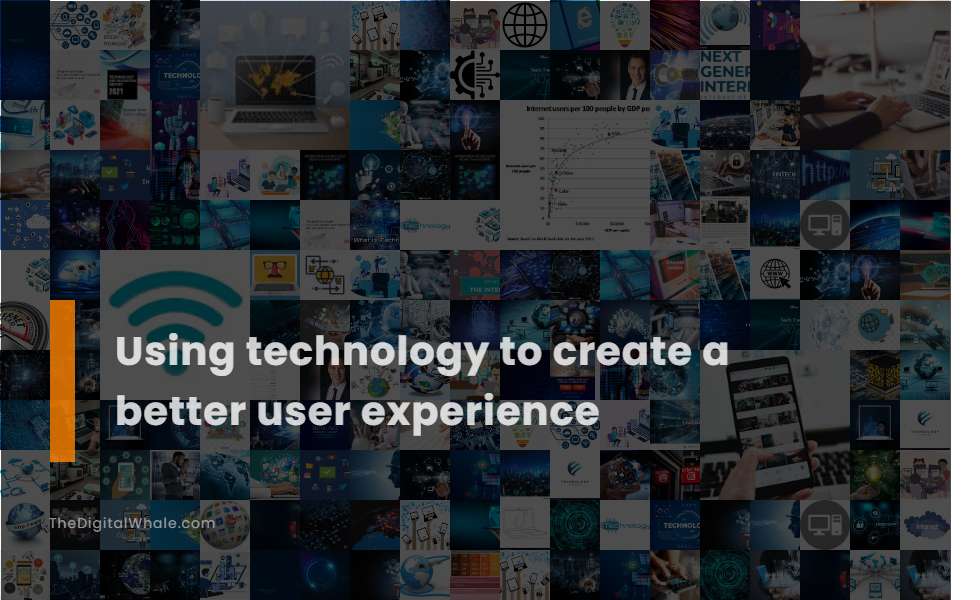Using Technology To Create A Better User Experience
What are the weaknesses of using heuristic evaluation in user experience design? What are the benefits of using technology to create better user experiences? Let's find out more about Using Technology To Create A Better User Experience.

Personalization: Tailor experiences using AI to analyze user data, behavior, and preferences.
AI personalization leverages advanced technologies like machine learning, natural language processing, and generative AI to meticulously analyze user data, behavior, and preferences. This enables businesses to provide tailored recommendations, content, and interactions that significantly enhance user engagement and satisfaction. Employing sophisticated algorithms, AI-driven personalization customizes user experiences dynamically using real-time data, predicting customer behaviors and adapting to individual preferences for delivering relevant and engaging interactions. In the retail sector, AI-powered personalization examines extensive customer data such as purchase history, browsing behavior, and demographics to forge highly personalized shopping experiences, which include product recommendations and targeted marketing campaigns that heighten customer satisfaction and loyalty.
Intelligent Automation: Automate repetitive tasks using AI to enhance efficiency and user support.
Intelligent Automation uses AI, Machine Learning, and Robotic Process Automation (RPA) to automate repetitive tasks, enhance efficiency, and support informed decision-making, thereby improving user experience through faster response times, greater accuracy, and more consistent results. This technology integrates with various systems to capture and retrieve data, optimize processes, and scale operations while adhering to security and compliance requirements. To learn more, visit the Intelligent Automation page on Automation Anywhere's website.
Predictive Analytics: Use machine learning to predict user behavior and inform design decisions.
Predictive UX utilizes Machine Learning and predictive analytics to anticipate user behavior, informing design decisions by analyzing historical data, identifying patterns, and adapting content and interfaces to meet user needs proactively. This approach enhances personalization and user engagement effectively. To learn more about this, you can explore the detailed insights provided by Daffodil Software, which offers an in-depth look at how these technologies transform user experiences by leveraging data-driven strategies.
Voice User Interface: Implement AI-powered voice interfaces for a more intuitive and hands-free experience.
Implementing AI-powered voice interfaces enhances user experience by providing intuitive, hands-free interactions. These systems prioritize user needs, ensure clear prompts, and offer personalized responses through natural language understanding and context awareness. To delve deeper into how these interfaces are revolutionizing user engagement, explore the insights shared in the article on The Power Of Voice UI.
Ensure Ease of Use: Design intuitive and easy-to-navigate interfaces to improve usability.
To ensure ease of use, designers can leverage AI to create intuitive and easy-to-navigate interfaces by automating repetitive tasks, personalizing user experiences, and using predictive analytics to optimize user flows, thereby enhancing usability and overall user satisfaction. For more insights on such strategies, the Impact of AI on User Experience Design offers a comprehensive guide that explores these advancements in detail.
Related:
How has technology made our lives easier? Can assistant speakers take the place of a single speaker in a home for music? Let's find out more about 10 Ways Technology Can Make Your Life Easier.
Optimize Website Speed: Improve page load times to reduce bounce rates and enhance user engagement.
Optimizing website speed involves strategies such as optimizing image files, minifying and combining files, using browser caching, enabling gzip compression, minimizing redirects, and optimizing code execution to reduce page load times. These techniques are key to decreasing bounce rates and enhancing user engagement. For a comprehensive understanding of these strategies, you can visit the Web Performance Optimization article on Shopify's website.
Enhance Mobile Responsiveness: Ensure seamless experiences across different screen sizes and devices.
To enhance mobile responsiveness, use techniques such as fluid layouts, flexible grids, and media queries to ensure seamless user experiences across various devices. This includes designing for thumbs, utilizing native hardware, and adapting layouts for both portrait and landscape orientations. For more detailed insights on the best practices, visit Responsive Design Best Practices on Toptal.
Improve Website Accessibility: Follow accessibility guidelines to make the website usable for all users, including those with disabilities.
To improve website accessibility, follow the WCAG guidelines, ensuring your site is perceivable, operable, understandable, and robust. This includes using proper color contrast, providing captions and transcripts, ensuring keyboard-only navigation, and structuring content with clear headings and informative link text. For more detailed insights and resources, consult the HubSpot Blog, which offers comprehensive strategies to make your website more accessible to all users.
Conduct User Research: Gather insights into user needs, preferences, and pain points to tailor the user experience.
Conducting user research involves gathering insights into users' behaviors, needs, and pain points through methods such as user interviews, field studies, diary research, and usability testing. These methods help you understand what users actually need and enable you to make informed design decisions. For more detailed guidance on effective user experience research, you can explore the comprehensive resources available at Maze.
Leverage Feedback: Use user feedback and surveys to identify and address usability issues and improve the user experience.
Using user feedback and surveys is crucial for identifying and addressing usability issues, as it helps in understanding visitor concerns, reducing bounce rates, and optimizing the website for a better user experience. By gathering insights on design, mobile responsiveness, navigation, and other aspects, surveys can be immensely beneficial. Discover more about enhancing usability on the Zonka Feedback Blog, which provides valuable information on performing effective website usability surveys.
Related:
What are some signs that someone is addicted to their smartphone? What are some signs that you are addicted to your phone? Let's find out more about 5 Signs You May Be Addicted To Your Smartphone.
